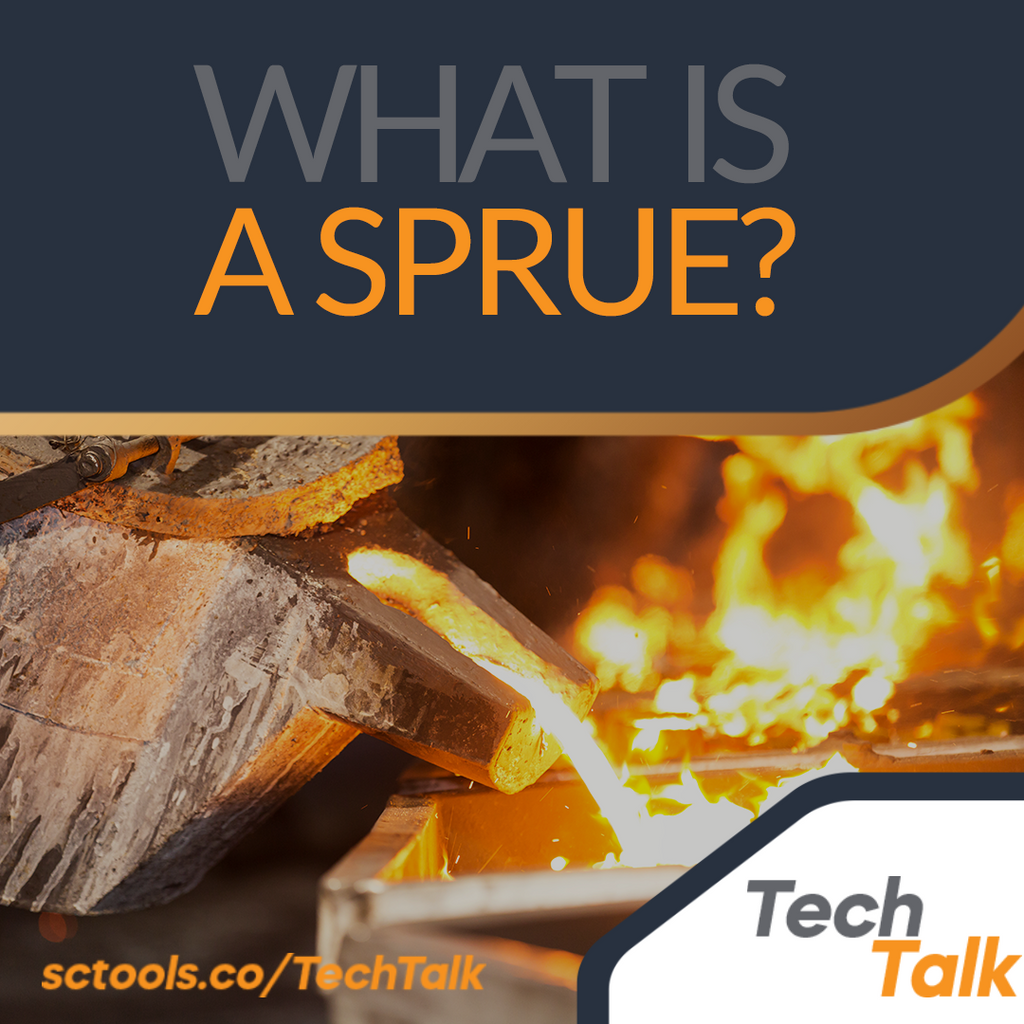A sprue is a vertical path through which molten material flows into a casting mold. It is the first entry point for liquid metal into the mold cavity and the main pressure transmission channel, so the sprue's size will impact the flow rate and filling time of liquid metal.
Die casting molds' designs enable manufacturers to obtain finished products that do not require assembly. However, sprues can also leave behind some extra material that needs to be removed from the casting.
It frequently regulates how much material flows into the mold. The material in the sprue joins the runner to the pouring base and is typically tapered downward to reduce turbulence and the development of air bubbles.
Casting also depends on the gating and runner design of the sprue. Both bottom and vertical gating options are possible in the design. In the case of equal heights of the casting material and the gating, the equation may be adjusted accordingly.
The Equation
The route through which a liquid material (such as polystyrene or polyvinyl chloride) flows into a die, where the material hardens to make pieces, is referred to as a sprue in injection molding. Sprue is another name for the substance that solidifies in these channels, creating a framework that holds the components together in a roughly planar configuration.
Types of Injection Sprue Molding
Cold Sprue in Injection Molding
To provide a passage between the injector of the molding machine and the mold chamber, cold sprue bushings are incorporated into the mold. If appearance is crucial, they are warmed and ultimately leave a sprue that must be excluded, frequently through a further operation. The "O" dimension hole entrance and the circular radius are the two crucial dimensions on the hose end of the bushing.
Hot Sprue in Injection Molding
To generate a hot route between the nozzles of the molding apparatus and the mold chamber, hot sprue bushings are placed inside the mold. The resin melt is kept hot inside the brushing using a heat exchanger that is located inside the brushing.
Sprue Bush Design
However, flat-type brushes with a flat surface rather than a nozzle radius are also available. Sprue bushings typically have a circular radius of half or three-quarters of an inch. The buyer must additionally select a few other dimensions.
You can create a sprue bush using your calculations or buy one. Small molds are utilized with sprues with two bolts, which can be used with injection machines that weigh less than 350 tons. Large molds are utilized with sprues with four bolts, which can be used with injection machines that weigh more than 200 tons.
The sprue's ball radius must be greater than the nozzle's radius when creating or choosing a sprue bush. If it is smaller, there will be a space between the sprue and the nozzle, the resin will overflow, and the injection machine's tension will be lost. If it is greater, tension will be maintained.
The inner hole must have a diameter that is bigger than the nozzle hole. It prevents the molten plastic material from migrating if it is less than the hole diameter of the nozzle. The nozzle typically has a diameter of 25mm. Be sure to check the injection machine catalog when choosing the sprue to ensure it is 0.5 m or larger.
Typically, the inner hole angle is about 26 degrees. For the best results, shoot at a 35-degree angle. Verify the mold plate's measurements; the length of the sprue must match the plate's thickness. If the sprue thickness is substantial, it could be necessary to cool the sprue bush to speed up the injection process.
SCTools offers comprehensive injection molding solutions to minimize downtime and maximize performance. With our experience and in-depth industry knowledge, you'll receive the perfect products at the best price.
 |
If you have any questions about carbide cutting tools, end mills, drills, etc. be sure to reach out to us @ sctools.co/Home or call us at (877)737-0987. We help you machine better! |



Comments (0)